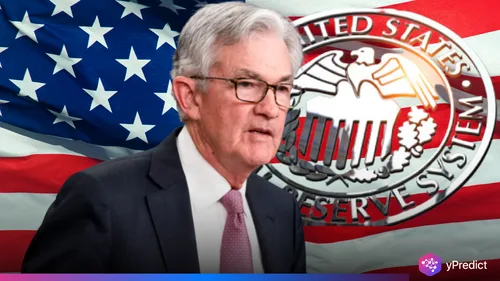
The Mexican Peso surged to a new year-to-date (YTD) high in 2025, gaining for the second straight session on Wednesday amid a weakening US Dollar, investor optimism toward emerging markets, and expectations of continued easing from the Bank of Mexico (Banxico).
At the time of writing, USD/MXN is down 0.32%, trading below 19.40. This sharp decline follows softer-than-expected US inflation data and rising speculation that the Federal Reserve (Fed) will begin cutting rates as soon as September. Meanwhile, Banxico is widely expected to announce another 50 basis-point rate cut on Thursday, which could bring its key policy rate down to 8.5%.
Fed and Banxico Divergence Fuels Peso Momentum
Markets are closely watching remarks from Fed officials this week, including Vice Chair Philip Jefferson and San Francisco Fed President Mary Daly. Their commentary, along with Fed Chair Jerome Powell’s scheduled speech on Thursday, is expected to shape near-term rate expectations. Tuesday’s US CPI data showed a further cooling of inflation, bolstering calls for a rate cut later this year.
With the Fed keeping rates on hold for now and Banxico accelerating its easing cycle, the narrowing interest rate differential is in focus. While this may reduce the Peso’s yield advantage, investor sentiment toward emerging markets and confidence in Mexico’s inflation trajectory continue to lend support to the Mexican Peso 2025 high.
Banxico has already cut rates at six consecutive meetings since August 2024. A seventh cut this week would represent a cumulative 250 basis points in easing, underscoring a strong dovish pivot.
US-Mexico Trade Risks Add Pressure
While monetary policy dominates headlines, trade tensions are adding another layer of uncertainty. The US recently imposed 25% tariffs on Mexican steel, aluminum, and auto parts not covered under the USMCA agreement. These actions, driven by concerns over border security and fentanyl trafficking, could disrupt Mexico’s export-heavy economy—especially given that the US accounts for over 80% of Mexican exports.
To mitigate uncertainty, Mexico’s Economy Minister Marcelo Ebrard has proposed advancing the USMCA review to 2025, ahead of the formal 2026 schedule. The goal is to stabilize investor sentiment and ensure continuity in a trading relationship that supports over $1.5 trillion in annual commerce.
However, any escalation in trade friction could dampen growth prospects and hurt long-term Peso strength despite short-term monetary policy tailwinds.
USD/MXN Technical Breakdown Confirms Bearish Outlook
On the technical side, USD/MXN has decisively broken below the April low of 19.42, confirming a downside breakout. The pair exited its month-long consolidation, failing to recover above key resistance levels including the 20-day moving average at 19.59 and the 23.6% Fibonacci retracement level at 19.81.
The Relative Strength Index (RSI) at 36.86 signals building bearish momentum, though it is not yet in oversold territory, leaving room for further losses. If bearish pressure continues, the next target is the support zone around 19.30, near the October 2024 swing low.
A daily close above 19.42 would neutralize the bearish structure, potentially triggering a rebound toward 19.81 and the psychological 20.00 level, which aligns with the 38.2% Fibonacci retracement at 20.06.
Conclusion
As the Mexican Peso hits a new 2025 high, the convergence of monetary policy divergence, resilient emerging market sentiment, and looming trade tensions will dictate its next move. The short-term bias remains bullish for the Peso, especially if Banxico signals confidence in its inflation trajectory. However, any shift in Fed tone or escalation in US-Mexico trade disputes could alter the outlook quickly.







